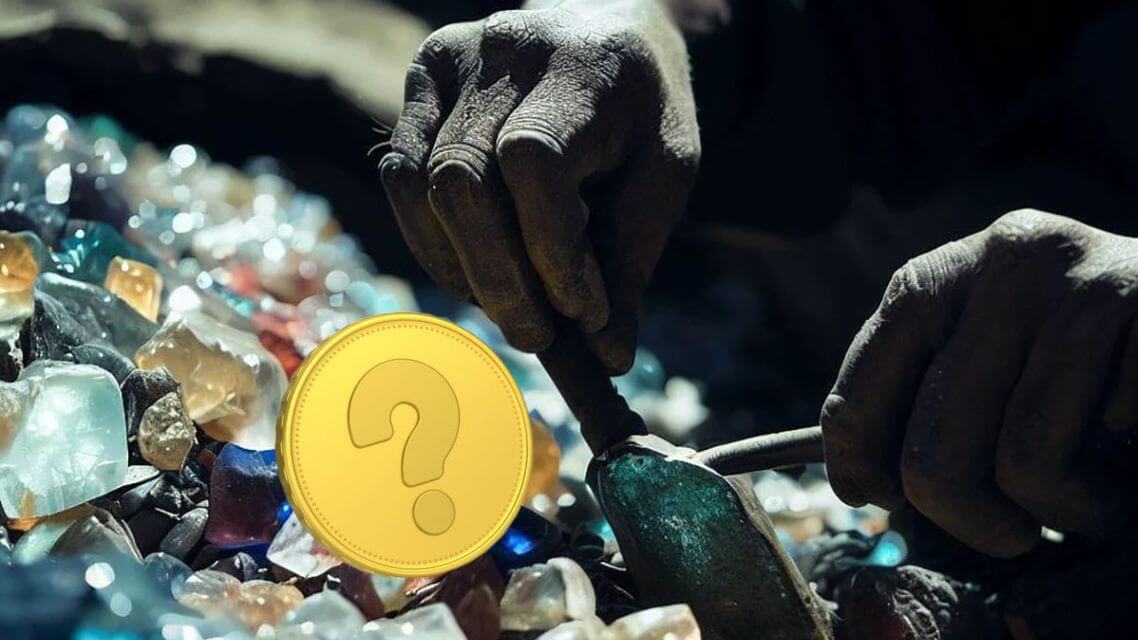
As 2025 approaches, certain cryptocurrencies remain under the radar yet show signs of explosive potential. This article delves into these lesser-known digital assets that could yield significant returns. Uncover which coins are set to make remarkable strides and why they might be the next big opportunity in the crypto market.
Graphite Token (@G): Powering the Blockchain That Could Topple Ethereum and Solana
Ethereum (ETH) and Solana (SOL) have had their time in the spotlight. Now, Graphite Token (@G) is here, bringing with it the power of the Graphite L1 blockchain designed to make crypto simpler, faster, and more rewarding for everyone. Could this be the next big thing to follow Ethereum’s legendary 4,000X growth?
The secret to life-changing crypto profits lies in spotting the next hidden gem before the crowd. History shows that early adopters of projects with real utility reap massive rewards:
-
Solana started at $0.04 and skyrocketed to nearly $300 — a staggering +7,500%.
-
Ethereum launched below $1 and climbed to around $4,000 — an insane +400,000%.
The secret to their growth? Utility. The more people use them, the more valuable their tokens become. But times have changed, and these blockchains aren’t cutting it anymore.
Discover SOL and ETH Challenger for 4,000X Profit Potential
What’s Wrong with Ethereum and Solana?
Older blockchains face growing challenges like rising fees, complexity, regulatory uncertainty, and questions about reliability. Take Solana, which occasionally experiences network outages, or Ethereum, which saw a significant reduction in its burn rate in 2024.
Between unpredictable gas costs, unsatisfactory speed, and unreliable service, users are starting to look elsewhere. The dominance of the “old guard” is fading.
What Graphite Brings to the Table
Graphite is built to address the challenges of older blockchains with a set of practical features.
Direct Rewards for Entry-Point Nodes
Graphite has something no other blockchain offers. It lets entry-point nodes earn 50% of transaction fees passing through their nodes, so literally anyone contributing to its operations can earn a share.
Transparent, Trust-Based Interactions
Graphite’s reputation-based system introduces a Trust Score, a measure of user credibility similar to a credit rating in TradFi. This approach enhances transparency while keeping user privacy within the network where interactions are built on trust.
Fair Fees, Fast Speed, and High Scalability
Powered by the PoA Polymer 2.0 Algorithm, Graphite keeps fees plain and as low as possible by minimizing computational and energy costs. The network processes up to 1,400 transactions per second with confirmation times under 10 seconds, delivering a perfect balance of speed, cost-efficiency, and reliability.
Security as a Top Priority
Graphite enforces a one user – one account policy to safeguard its network against fraud and scams. Additionally, it offers an optional KYC verification procedure with three tiers of off-chain checks powered by ZKP to ensure compliance while protecting user data. With transaction filters, users can choose to interact only with accounts that meet specific KYC levels, adding an extra layer of security.
Is This Your Chance to Get in Early?
The Graphite blockchain is secure, transparent, scalable, and cost-efficient, making it the go-to choice for developers and users alike. With its practical approach and early adoption potential, Graphite is a project worth watching.
For those looking to get in early, Graphite offers an opportunity to be part of a blockchain that’s designed for long-term growth and usability. Will it deliver 4,000X gains? Time will tell, but the foundation is strong.
This could be your shot at 4,000X profits — Don’t miss out!
OM: MANTRA – A Security-Focused Blockchain Bridging Institutions to Web3
OM: MANTRA is a new blockchain that puts security first. It meets real-world regulatory requirements, making it suitable for institutions and developers. Built using the Cosmos SDK, it’s compatible with IBC and supports CosmWasm. Secured by its own Proof-of-Stake validator set, MANTRA can handle up to 10,000 transactions per second. It offers built-in modules, SDKs, and APIs to create, trade, and manage regulatory-compliant real-world assets. The user experience is improved to help non-native users and institutions move into Web3. With its permissionless blockchain for permissioned applications, MANTRA aims to bridge the gap between traditional finance and the decentralized world.
Polkadot (DOT): Connecting Blockchains for Seamless Transactions
Polkadot is a decentralized protocol and cryptocurrency known as DOT. It enables secure communication between different blockchains like Ethereum and Bitcoin without intermediaries. This allows value and data to be shared smoothly across chains. Using parachains, Polkadot enhances speed and scalability, handling more transactions than Bitcoin and Ethereum. The DOT token is used for governance and staking within the network. Holders can take part in the protocol’s development and transaction verification. Created by Gavin Wood, a co-founder of Ethereum, and maintained by the Web3 Foundation, Polkadot aims to make blockchains more interconnected and efficient.
Sei: Sector-Specific Layer 1 Blockchain Optimized for Trading
Sei is the first Layer 1 blockchain specialized for trading, aiming to give exchanges an unfair advantage. It handles a high number of orders per second, with a transaction finality of 380ms. The platform seeks security backed by large institutions and is built with a deep commitment to security. By focusing on trading, Sei offers exchanges an infrastructure tailored to their needs, potentially enhancing their performance in the blockchain market.
Introducing Aptos: A Scalable and Safe Layer-One Blockchain
Aptos is a new layer-one blockchain designed to be scalable, safe, and reliable. It aims to solve the problems of high transaction fees and network congestion seen in some existing blockchains like Ethereum before its Proof-of-Stake transition. Developed by Aptos Labs, founded by core contributors from Diem (a Meta initiative), it uses a Proof-of-Stake consensus mechanism. Aptos focuses on scalability and uses the Move programming language for its smart contracts, highlighting safety and flexibility. It supports a broad range of Web3 applications. As interest in scalable blockchain solutions grows, Aptos presents technology that addresses key challenges in the crypto space.
Conclusion
While coins like OM, DOT, SEI, and APT show potential, they may offer less immediate gains. In contrast, Graphite Token (@G) stands out as a unique opportunity. It powers the Graphite L1 blockchain, which aims to make crypto simpler and faster. Graphite addresses issues like high fees and network outages seen in older blockchains. It offers fair transaction costs and a Trust Score system based on reputation. Its reward model lets entry-point nodes earn 50% of transaction fees. With strong security from Polymer 2.0 and optional KYC verification, Graphite seeks to set new standards for reliability. For early adopters, it presents a chance to benefit from a project designed for lasting utility and growth.
Disclaimer: This is a sponsored press release and is for informational purposes only. It does not reflect the views of Crypto Daily, nor is it intended to be used as legal, tax, investment, or financial advice.










